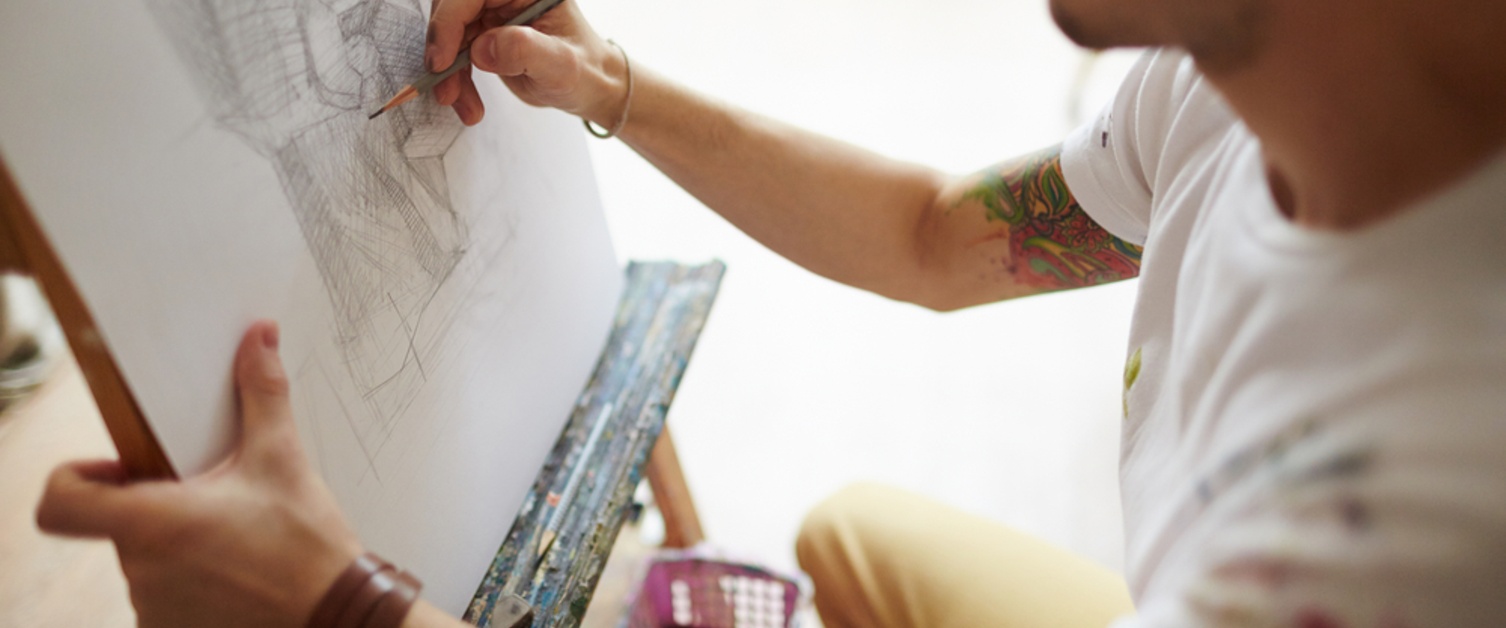Inktober
- foster care rights, my rights
- Resources for Teens and Young Adults
What is the Inktober Challenge?
Jake Parker created Inktober in 2009 as a challenge to improve his inking skills and develop positive drawing habits. It has since grown into a worldwide endeavor with thousands of artists taking on the challenge every year.
There are two ways to practice Inktober! Check out the following links to find out the ways you can practice: Inktober Classic Rules & Prompts — Inktober & Inktober 52 Inktober52 — Inktober
If you’re interested in finding out more about anything related to Inktober, check out the following resource for more information: Inktober
How is Inktober Related to Mental Health?
Creating art can have a positive and meaningful connection for many people’s mental health. Many people have found healing and recovery through art in many different medias - painting, drawing, sculpting, and more. Creating art stimulates your thinking, imagination, and problem-solving skills. There are no right and wrong answers in creating art;, you’re encouraged to imagine your own solutions. This type of thinking encourages your brain to function in the same ways it does when taking on a new language. Creating art boosts the dopamine levels in your brain, which is linked to an increase in drive, concentration, and overall happiness. You can think of art like brain food; it’s good for your brain!
If you’re interested in learning more about the benefits of art and your mental health, check out the following resources:
- Art and Mental Health: Why Art Benefits Your Mental Health
- How Making Art Helps Teens Better Understand Their Mental Health
Tattoos and Mental Health
As we looked into how art has improved people’s mental health we found that one of the most popular canvases can be the human body. Many people find comfort and empowerment in getting tattooed, particularly getting tattoos that are representative of their mental health journey. It was found that many people have had improved self-image and self-esteem after getting a tattoo. Many people have also suggested that getting a tattoo positions them to make big decisions for themselves and have the confidence to have control over their own bodies. Many times, these tattoos remind people of a struggle that they have overcome or serve as an encouragement to keep facing an adversity or struggle that they are still overcoming.
If you’re interested in learning more about tattoos and mental health, check out some of these resources:
- Should You Get a Depression Tattoo?
- Tattoos as a window to the psyche: How talking about skin art can inform psychiatric practice - PMC.
- Are tattoos a form of therapy?
Stories from young adults with lived experience:
C.M.
“I got my tattoo my senior year of college - I was worried about what was going to happen next, like most college students do in their senior year. I noticed myself moving farther and farther away from who I wanted to become because the fear I felt was overtaking me. I knew that going back to my biological family was not an option. As I am sure many of you can relate, I started to spiral as I started thinking about all of the shame I felt for not having a family to go home to, for not having a home. I didn’t want to fail, especially after putting in all that work!
A friend of mine mentioned that she was going to get a tattoo in a couple days and asked if I wanted to come since her friend changed her mind about getting a tattoo. Needless to say, I was inked in the same week. My tattoo is one of my favorite features now. I look at it and I’m reminded that I am loved unconditionally by the single most important thing to me, Yehovah, regardless of what my childhood took me through.”
Kat D.
“I spent the last few years of high school thinking about what I wanted my first tattoo to be. I knew I wanted it to be personal and important to me. I wanted it to be representative of not only my mental health journey, but my life. During my junior year we read Kurt Vonnegut’s Slaughterhouse-Five, and to say this book impacted me greatly would be an understatement. I remember reading through each page and thinking about the passage of time. It reminded me of all these tiny moments in my life where I didn’t think time would go on or moments where I thought the world ended, just to step outside to find the sun rising the next morning and life continuing on, like it always did.
I was sixteen at the time, and I never thought I’d get to sixteen nonetheless eighteen. So, I made myself a promise. On my eighteenth birthday, I planned on getting “this too shall pass;” tattooed. I wanted it as a permanent reminder that I can weather any storm that comes my way, and that rain doesn’t last forever. The semi colon was representative of my conscious choice to continue my story, no matter what chapters end or change along the way. And still after all this time, I look down at my tattoo and breathe in a sigh of relief. This too shall pass.
